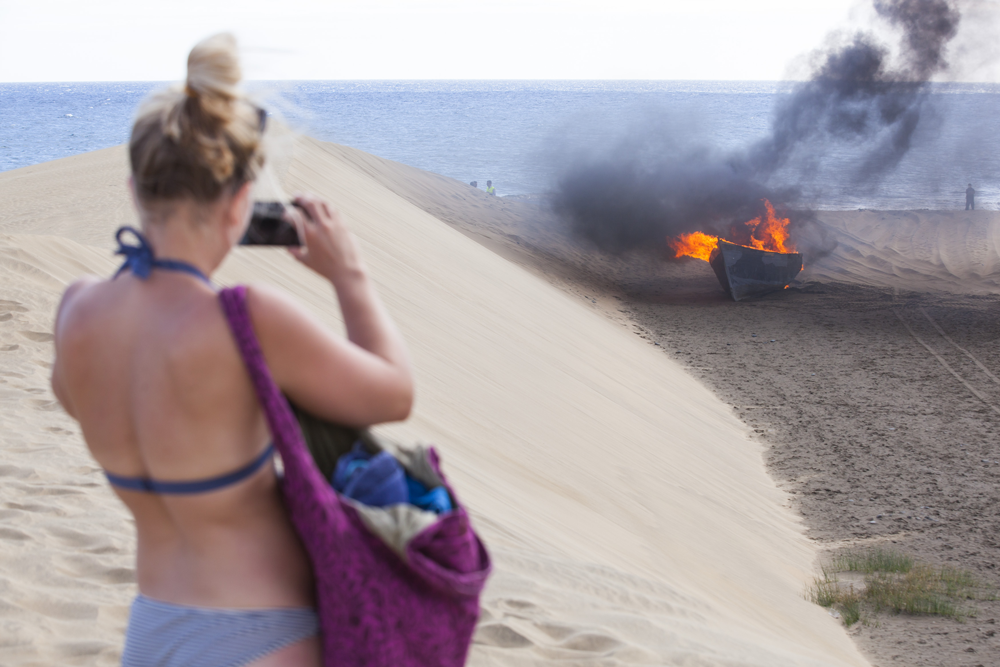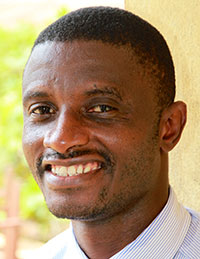I also should add to the above post that I was talking about 100 million "reported and confirmed Ebola deaths." The actual total could be up to four times higher. Further, even if everybody in Liberia died, it would be six million people total. Until Ebola gets loose in Lagos, or Cairo, we are just not going to see the numbers of deaths needed to get to 100 million. It will take Ebola time to get going in Africa in my opinion.
For the record, gang why would anybody, who was not insane, go to Mali in the first place? <G>
CDC ISSUES TRAVEL WARNING FOR MALI
http://fluboard.rhizalabs.com/forum/viewtopic.php?f=5&t=12947
Board index » Discussion » General Discussion
All times are UTC - 5 hours [ DST ]
CDC Issues Travel Warning On Ebola In Mali
Post new topic Reply to topic Page 1 of 1
[ 2 posts ]
Print view Previous topic | Next topic
Author Message
niman
Post subject: CDC Issues Travel Warning On Ebola In Mali
PostPosted: Fri Nov 14, 2014 1:53 pm
Online
Joined: Wed Aug 19, 2009 10:42 am
Posts: 47760
Location: Pittsburgh, PA USA
The CDC has issued an Ebola travel warning for Mali as cases explode.
http://wwwnc.cdc.gov/travel/notices/alert/ebola-mali
_________________
www.twitter.com/hniman
Top
Profile
niman
Post subject: Re: CDC Issues Travel Warning On Ebola In Mali
PostPosted: Fri Nov 14, 2014 1:56 pm
Online
Joined: Wed Aug 19, 2009 10:42 am
Posts: 47760
Location: Pittsburgh, PA USA
Released: November 13, 2014
The purpose of this alert is to notify travelers that a few Ebola cases have been reported in Bamako, Mali, and to inform them of actions they can take to reduce their risk of getting the disease.
CDC recommends that travelers to Mali protect themselves by avoiding contact with the blood and body fluids of people who are sick, because of the possibility they may be sick with Ebola. Although a cluster of cases has been reported only in Bamako, travelers to all parts of Mali should be alert for reports of possible further spread within the country.
At a Glance
Total Cases: 4
Laboratory-Confirmed Cases: 2
Total Deaths: 4
More
What is the current situation?
As of November 12, 2014, the World Health Organization reported a cluster of Ebola cases in Bamako, Mali (see box for case counts). (An unrelated death from Ebola occurred in Kayes, Mali on October 24, 2014 and no additional cases related to that person have been reported.) The cluster in Bamako is linked to a man who had been in a clinic in Bamako after becoming sick in Guinea. Since that time, a small number of Ebola cases linked to this patient have been reported in Bamako. The Malian government has taken actions to contain further spread. CDC recommends that travelers to Mali protect themselves by avoiding contact with the blood and body fluids of people who are sick and following the other recommendations listed below.
The cases of Ebola in Bamako, Mali, are related to an ongoing Ebola outbreak that has been occurring since March 2014 in Guinea, Liberia, and Sierra Leone and is the largest outbreak of Ebola in history.
For more information about the ongoing outbreak in West Africa, visit 2014 Ebola Outbreak in West Africa on the CDC Ebola website.
What is Ebola?
Ebola is a rare and deadly disease. The disease is caused by infection with one of the Ebola virus species (Zaire, Sudan, Bundibugyo, or Tai Forest virus). It is spread by direct contact (through broken skin or mucous membranes in, for example, the eyes, nose, or mouth) with
blood or body fluids (such as urine, saliva, sweat, feces, vomit, breast milk, and semen) of a person who is sick with Ebola,
objects (like needles and syringes) that have been contaminated with the virus, and
infected fruit bats or primates (apes and monkeys).
Signs of Ebola include fever and symptoms such as severe headache, fatigue, muscle pain, vomiting, diarrhea, stomach pain, or unexplained bleeding or bruising.
Who is at risk?
Travelers could be infected if they come into contact with blood or body fluids from someone who is sick or has died from Ebola. Healthcare workers and the family and friends in close contact with Ebola patients are at risk of getting sick because they may come in contact with infected blood or body fluids.
People also can become sick with Ebola if they come into contact with infected wildlife or raw or undercooked bushmeat (wild animals hunted for food) from an infected animal.
What can travelers do to prevent Ebola?
There is no approved vaccine or specific treatment for Ebola, and many people who get the disease die. Therefore, it is important to take steps to prevent Ebola.
How can I be exposed to Ebola?
You can be exposed to the Ebola virus if you have contact with blood or body fluids (such as urine, saliva, sweat, feces, vomit, breast milk, and semen) of a person sick with Ebola without wearing the right protective clothing and equipment. For healthcare workers, this includes wearing a face shield or goggles, a medical mask, double gloves, a waterproof gown or coveralls, an apron, and waterproof boots.
This kind of exposure can happen if you —
Are stuck with a needle or splashed in the eye, nose, or mouth with blood or body fluids of someone sick with Ebola.
Handle blood or body fluids of a sick Ebola patient.
Touch a person who is sick with Ebola.
Touch the body of someone who died from Ebola.
Care for or live with a person who is sick with Ebola.
Spend a long amount of time within 3 feet (1 meter) of a person who is sick with Ebola.
If you are traveling to Mali, please make sure to do the following:
Before your trip, review your health insurance plan to determine what medical services it would cover during your trip. Consider purchasing travel health and medical evacuation insurance.
Practice careful hygiene. For example, wash your hands frequently with soap and water or use an alcohol-based hand sanitizer.
Avoid contact with blood and body fluids (such as urine, saliva, sweat, feces, vomit, breast milk and semen).
Do not handle items that may have come in contact with an infected person’s blood or body fluids.
Avoid direct contact with dead bodies, including participating in funeral or burial rituals.
Avoid contact with animals (such as bats or monkeys) or with raw or undercooked meat.
Do not eat or handle bushmeat (wild animals hunted for food).
Avoid hospitals in West Africa where Ebola patients are being treated. The US Embassy or consulate is often able to provide advice on facilities that are suitable for your medical needs. The US Embassy in Bamako can be reached at (+223) 20 70 25 05. The after-hours emergency number is (+223) 20 70 23 01 or 20 70 23 02.
Seek medical care immediately if you develop fever (100.4°F / 38°C or above) or other symptoms such as severe headache, fatigue, muscle pain, vomiting, diarrhea, stomach pain, or unexplained bleeding or bruising.
Special Recommendation for Healthcare Workers
If you will be working in a healthcare setting while in Mali, you should be prepared to care for patients in a region where resources are limited and the healthcare system is strained.
Healthcare workers who may be exposed to people with Ebola should be sure to follow these steps:
Wear the recommended personal protective equipment (PPE).
Use proper infection control and decontamination measures.
Isolate patients with suspected, probable, or confirmed Ebola from other patients.
Avoid direct contact with dead bodies without wearing recommended PPE.
Immediately notify your organization, health officials, and the US embassy or consulate in Mali if you think you have been exposed to someone with Ebola but were not wearing recommended PPE.
See CDC’s resources on the Ebola: Non-US Healthcare Settings webpage and the CDC Safety Training Course for Healthcare Workers Going to West Africa in Response to the 2014 Ebola Outbreak. The World Health Organization also has advice in their Infection prevention and control guidance for care of patients in health-care settings, with focus on EbolaExternal Web Site Icon document.
After Your Return to the United States
If you were exposed to Ebola during your trip, call your state health department even if you do not have symptoms. A public health worker should evaluate your exposure level and symptoms, if you have them, to determine whether actions, such as medical evaluation and testing for Ebola, symptom monitoring, or travel restrictions are needed.
Pay attention to your health after you return, even if you were not exposed to Ebola during your trip.
Monitor your health for 21 days if you were in an area in Mali with an Ebola outbreak.
Take your temperature every morning and night.
Watch for other Ebola symptoms: severe headache, fatigue, muscle pain, vomiting, diarrhea, stomach pain, or unexplained bleeding or bruising.
If your temperature is 100.4°F / 38°C or above or you have any other Ebola symptoms, seek medical care right away.
Tell the doctor about your recent travel and your symptoms before you go to the doctor’s office or hospital. Advance notice will help the doctor care for you and protect other people who may be in the doctor’s office or hospital.
Limit your contact with other people when you travel to the doctor; avoid public transportation.
Do not travel anywhere except to the doctor’s office or hospital.
During the time that you are monitoring your health, you can continue your normal activities, including work. If you get symptoms of Ebola, it is important to stay apart from other people and to call your doctor right away.
Traveler Information
2014 Ebola Outbreak in West Africa
CDC Ebola website
Health Information for Travelers to Mali
Infographics
Infographic: Going to West Africa?
Infographic: Recently in West Africa?
Additional Ebola Outbreak Infographics
Clinician Information
Ebola Information for Healthcare Workers and Settings
CDC Health Advisory: Guidelines for Evaluation of US Patients Suspected of Having Ebola Virus Disease
Health Information for Travelers to Mali
Information for Airline Personnel
Ebola Guidance for Airlines



